When it comes to caring for your houseplants, you may wonder what kind of soil you can and should use for them. Can you use the same topsoil for your potted plants as you do for your outdoor garden? This is a great question! Choosing the right soil for your houseplants is vital to their ability to thrive!
You should not use topsoil for your potted houseplants. Topsoil will not drain or aerate properly in a pot, and will restrict the growth of the plant’s roots. You should use a potting soil that is designed to give your houseplants the ideal root environment and nutrients while growing in a pot.
Creating the right soil environment is the first step in achieving a flourishing and happy houseplant! There are some important differences between topsoil and potting soil that can make or break the life of your houseplants.
Topsoil for Houseplants
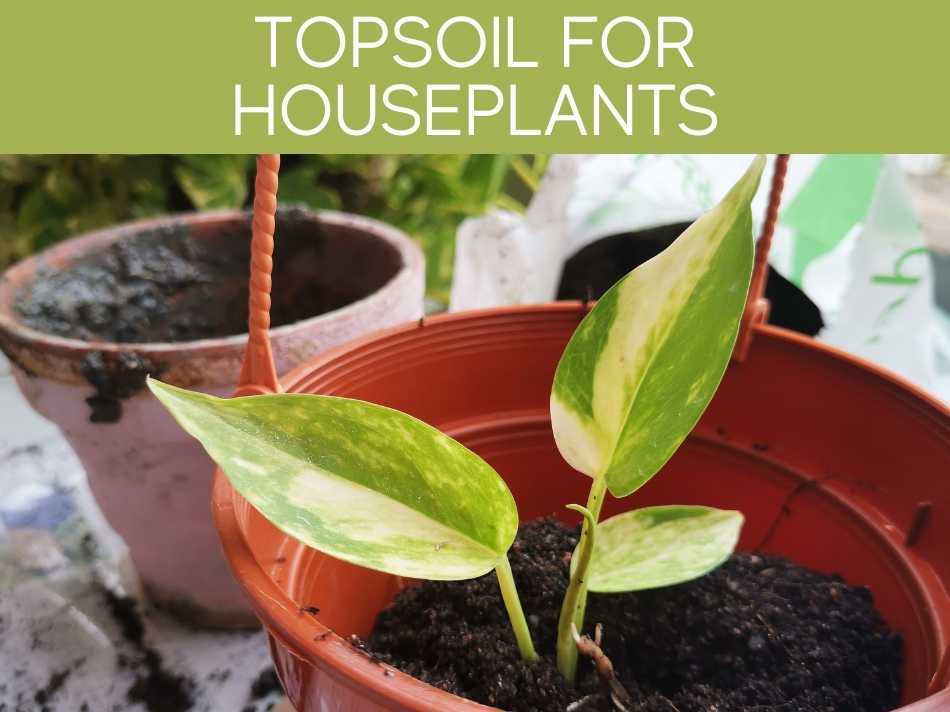
While it may be tempting to use the topsoil you already have in your garden for your houseplants, it is best to choose a potting soil instead.
Topsoil is exactly what it sounds like; the soil on the top of your garden.
Your natural inclination is probably to think that the soil from your beautiful, thriving garden would be the absolute best soil for your potted houseplants.
But unfortunately, topsoil will probably harm your houseplants (or at least make their life very difficult), since it typically gets compacted, & therefore doesn’t provide enough drainage or nutrients.
Topsoil is a mixture of clay, rocks, sand and organic matter.
Depending on where you live in the world, will determine exactly the mix of your natural topsoil in your garden.
When buying topsoil from the garden store it tends to have a universally balanced amount of clay, sand, rocks and organic material.
But don’t be fooled, even store bought, “top” of the line topsoil is still not ideal for your potted plants.
One of the problems with using topsoil in your potted houseplants is drainage.
Depending on the mix of your topsoil, it may drain too effectively in the pot and not allow the roots to access enough moisture or nutrients.
Another scenario is that the topsoil compacts too densely, not allowing for proper drainage or room for the plant’s roots to grow.
Topsoil, though it is the less expensive and more easily accessible option, is just not what your houseplants need for a happy life!
If you’re growing herbs indoors, check out our complete article on the best soil for indoor herbs.
Topsoil vs. Potting Soil
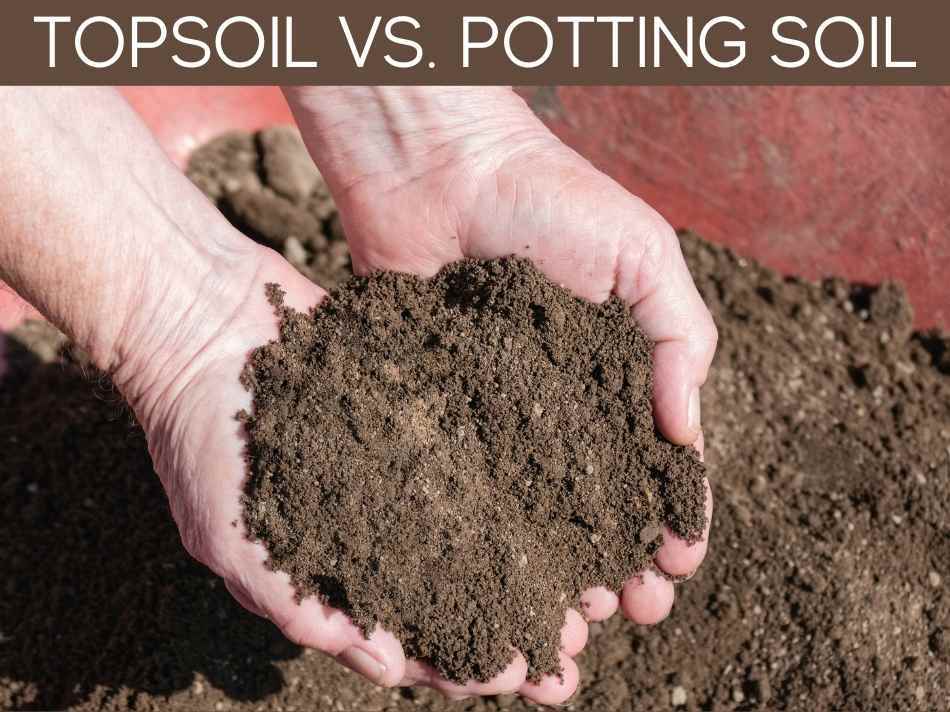
So what is the difference between topsoil and potting soil anyway?
Well, for starters, potting soil is not even technically soil.
Potting soil is a manufactured “soil-less” that is generally a mixture of peat moss, sand, bark and perlite (and most include compost in the mix as well).
Potting soil is created to be the ideal environment for potted plants.
It is created to drain and hold moisture properly, and compost to feed your plants!
Topsoil on the other hand is, by nature, the soil on top of your garden.
It is a rich, nutrient filled soil, but it is meant to be the top layer.
Topsoil does not cause the same problems for your outdoor garden that it does in your potted plants, because in your garden your topsoil has somewhere infinite to drain into!
Also, proper pH is critical for plant growth & health, and a quality soil meter will tell you your soil’s specific pH. See the complete article on whether soil meters are accurate.
Can I Use Topsoil for Potted Plants?
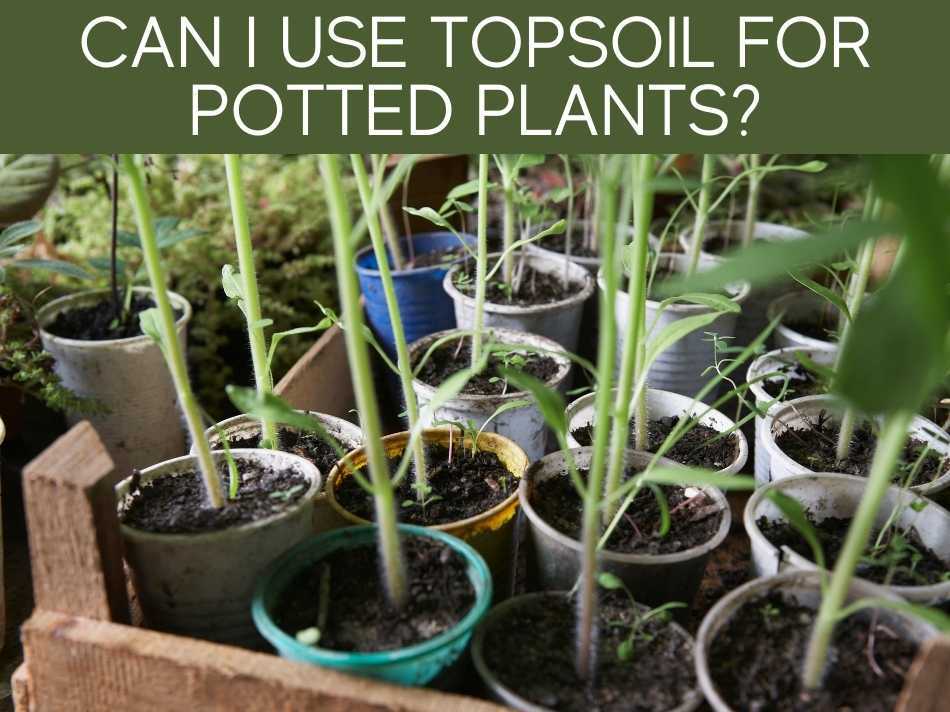
Perhaps you have beautiful, rich topsoil in your garden and you want to save a few dollars to start your houseplants; so you ask yourself “why not just use my topsoil?”.
You should not use your topsoil for your potted plants, no matter how rich and wonderful it is.
Topsoil does not perform the same way in a pot as it does in your outdoor garden, because it is not meant to be in a confined environment.
When you fill your pot with topsoil, it may look just fine for a while, but truly your plant will not thrive.
Topsoil compacts far too easily in a pot and will likely choke the roots of your plant and not allow them to grow and absorb nutrients.
Topsoil also will either drain too much or too little for your potted plant.
No matter how healthy your outdoor garden is, that does not mean your topsoil will provide the same abundant life in your house plants.
Best Soil Mixture for Houseplants
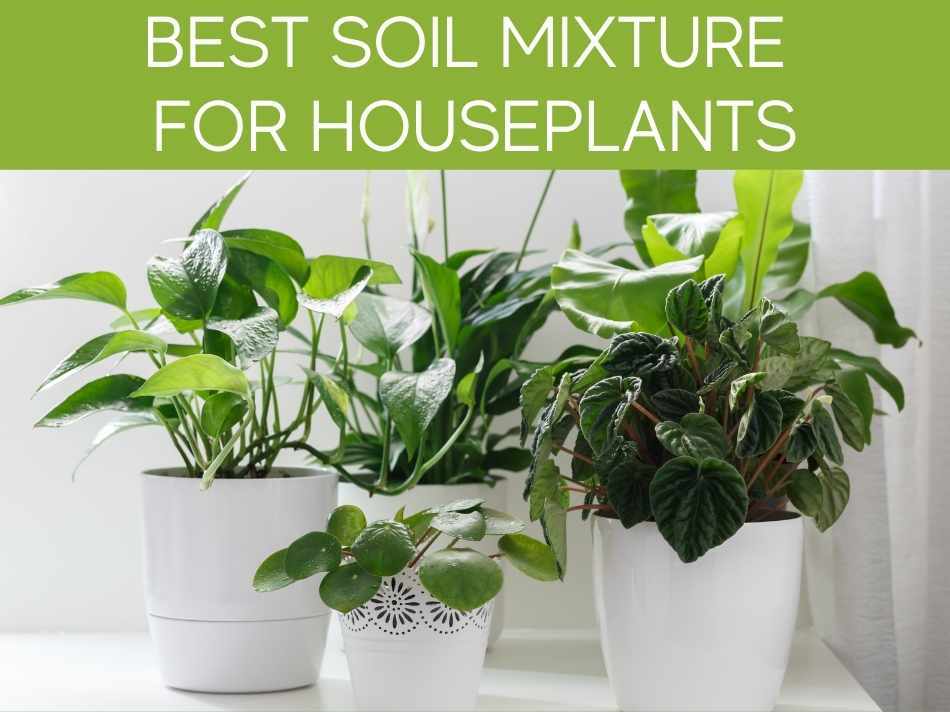
The best soil mixture for houseplants may depend slightly on the types of plants you are growing, but in general there are some key ingredients that are ideal for houseplants.
When purchasing a potting soil or making your own, it is important to consider the different needs a potted plant has!
A potting soil’s ingredients should allow for proper drainage, aeration and nutrient absorption.
A great outline for a potting soil would look like this: coarse sand, pine bark, compost, peat moss and perlite.
The coarse sand is a light base, bark improves aeration, compost provides nutrition, peat moss holds moisture and perlite improves drainage.
There are different variations to this basic outline, especially for different plants.
But this general guideline–coarse sand, pine bark, compost, peat moss, & perlite–will help you to make your own potting soil, or know what to look for when you purchase some.
Since Miracle-Gro is a common soil brand, you’ll want to check out the full answer on whether you canuse Miracle-Gro garden soil in pots.
Houseplant Soil Smells Bad
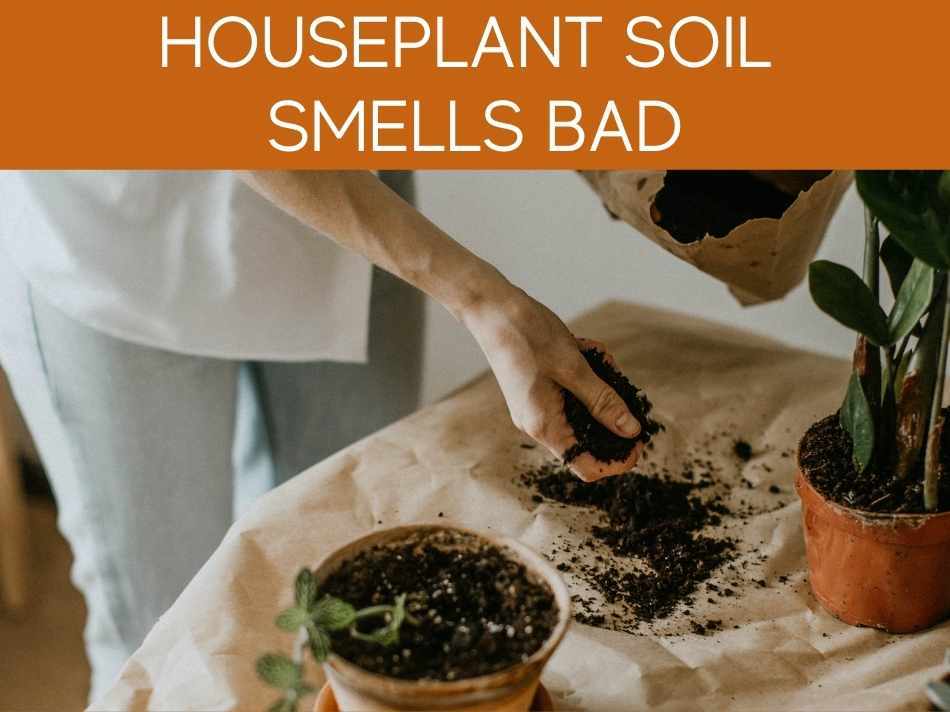
Houseplants are lovely to look at and can really brighten up your space, the last thing you want is a musty smelling pot in your living room!
The most common reason for bad smelling soil is root rot, which is due to over-watering and/or inadequate drainage.
If your houseplant’s soil does not have proper drainage, water will pool at the bottom of the pot and start to rot the roots.
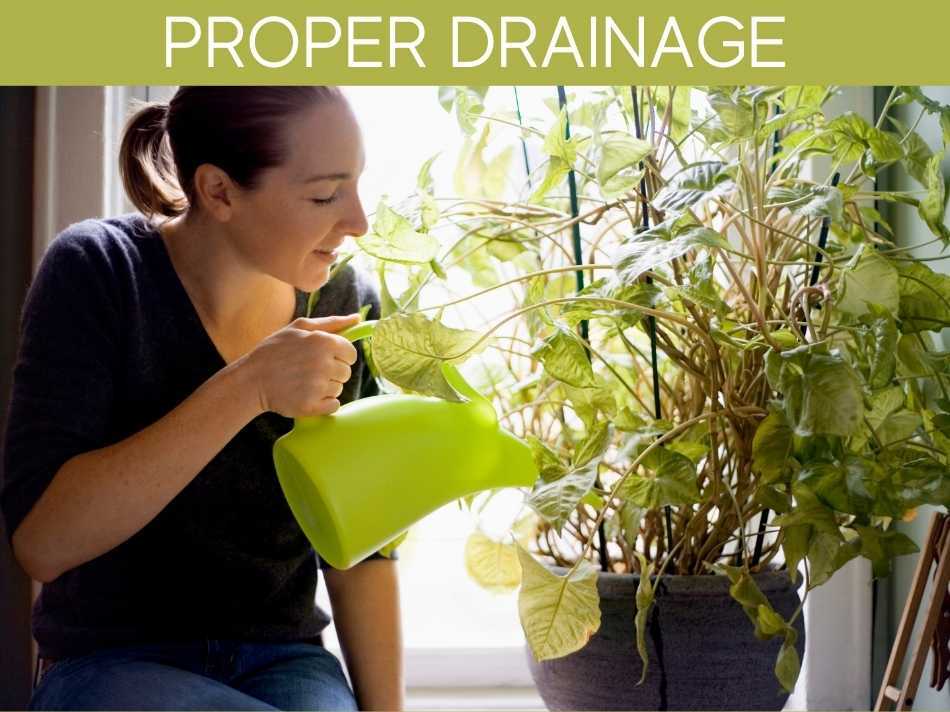
The bacteria and fungi that cause the rotting to your plants roots thrive in an extremely moist environment, which is part of why drainage is so important!
You can get moldy, stinky soil when there is nowhere for excess moisture to go except for into the hand of bacteria and fungus.
Ensuring that you have a lightweight potting soil for your houseplants is crucial to avoiding this foul-smelling problem.
If you do encounter root rot it is best to replant your houseplant with new potting soil, making sure your pot also has drainage holes for excess moisture.
Tiny Silver Bugs in Houseplant Soil
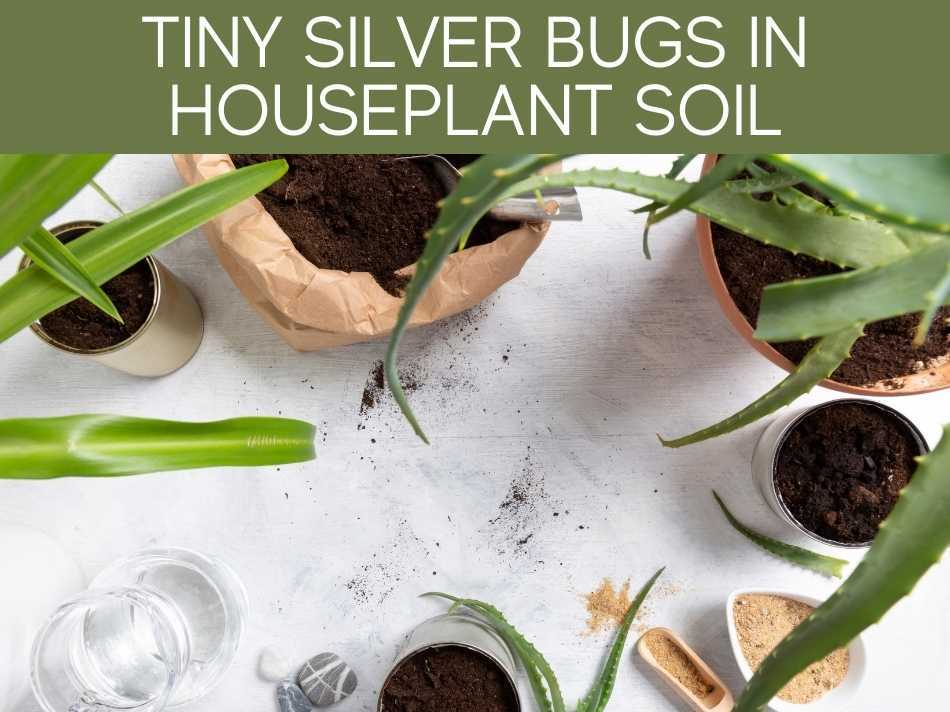
If you are carefully inspecting your plants for bugs regularly and you notice some tiny silver bugs, you may wonder what they are and if they are harmful.
The most common tiny silver bugs in houseplant soil are likely to be springtails.
Springtails are not harmful to your plant, but if you have an infestation they are quite annoying.
Springtails like to eat rotting organic material, and so are a sign of overwatering.
To get rid of springtails you will want to allow your soil to dry well before watering again.
You can also use pesticides that are specific to houseplants if you find that you can not get a handle on the springtail population in your pot.
Springtails are generally a sign of overwatering, so the best way to avoid dealing with these silver critters is to make sure your house plants have proper soil drainage!
Yellow Mold in Houseplant Soil
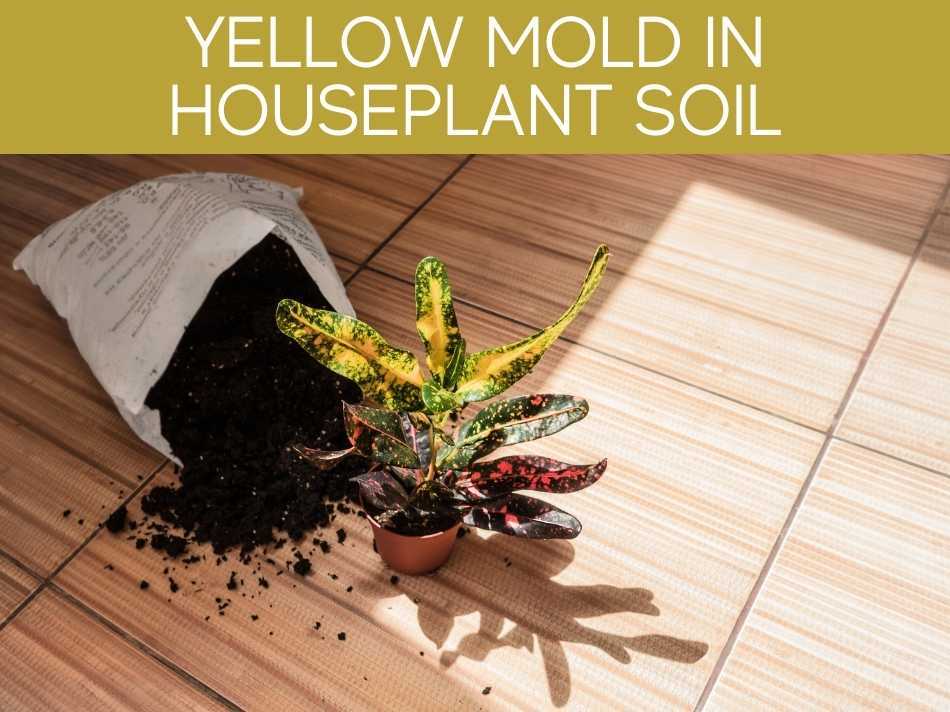
Weird things in our soil or on our plants tend to get us into a bit of a worry, but if you see some yellow mold in your potted plants it is likely harmless.
Yellow mold found in houseplant soil is most likely a saprophytic fungus which is harmless, or even beneficial to most plants.
Though it is harmless, this fungus growth is a sign that your plant’s soil is holding in too much moisture.
Make sure that you are using a well aerated potting soil, and that your pot has drainage holes for any excess moisture to escape.
Tiny White Insects in Houseplant Soil
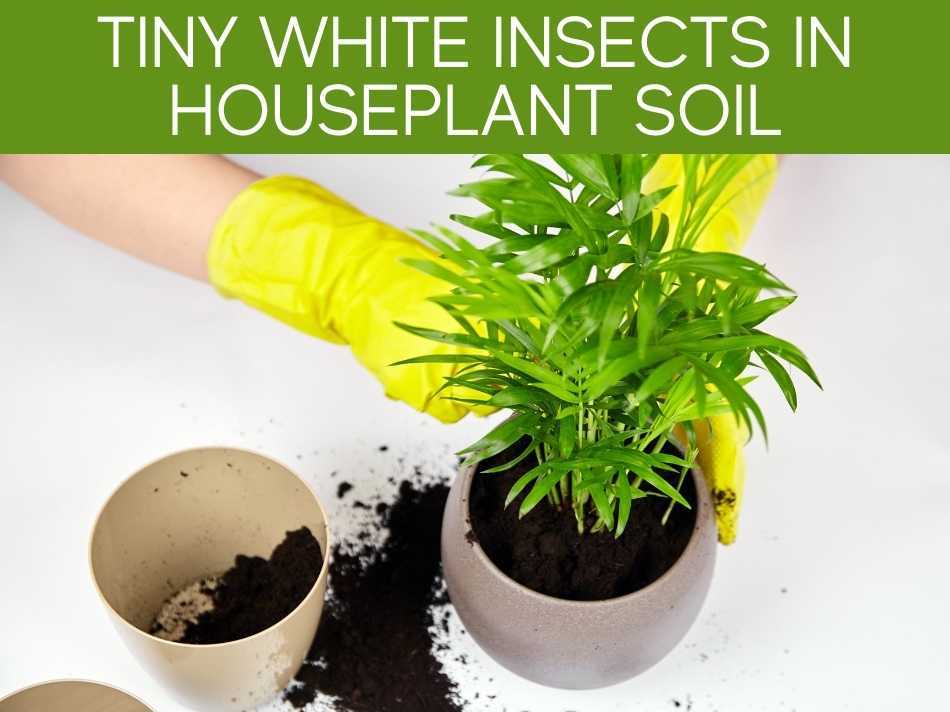
Nobody likes to see insects on their houseplants or in the soil – no matter how small!
If you see tiny white insects in your houseplant soil, they are likely soil mites.
Soil mites are harmless to your plants, they feed off of the compost property in the soil rather than the plant itself.
Although they are not necessarily harmful to your plant, you may still want to be rid of them for aesthetic purposes (or if you are like me and the word “mite” just gives you the creeps!)
You can use pesticides to get rid of soil mites if you really want them gone.
The easiest organic treatment for soil mites is to spread a layer of diatomaceous earth over the top of the soil.
Can You Put Worms in Houseplants?
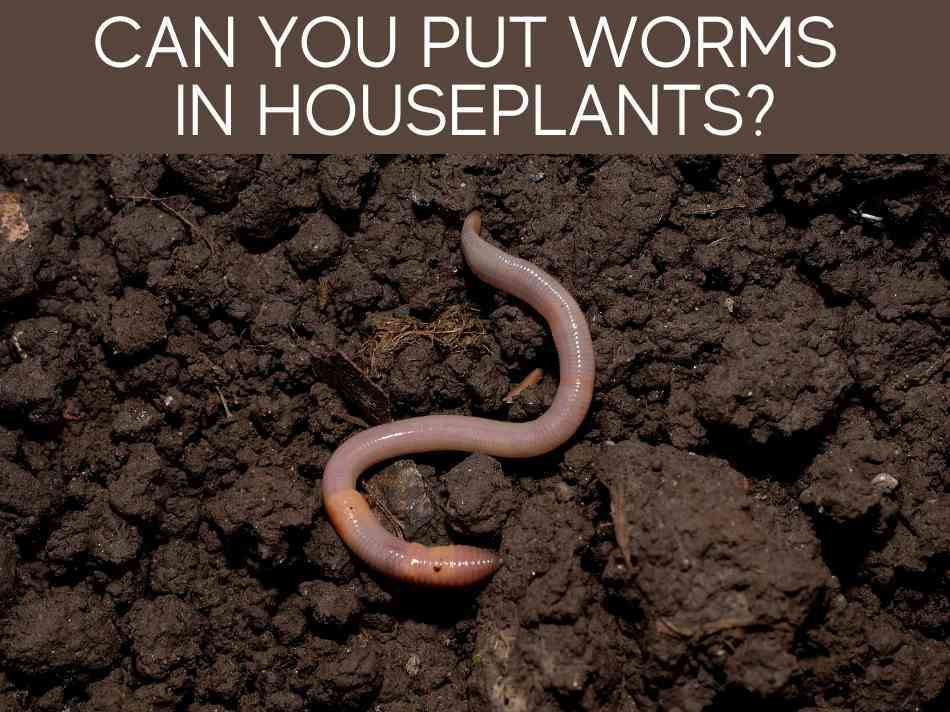
While we all know how fantastic worms are for the health of our outdoor gardens, does that mean we should also put them in our potted plants?
Although worms would add benefits to your potted soil, a pot is not the ideal environment for an earthworm so it would likely die or try to escape.
Worms need an abundance of dead organic material to feed on, and generally your potting soil doesn’t have much to offer in that department.
If you want the benefits of worms for your plants, but don’t want to risk them escaping into your house looking for better food, consider making your own worm compost.
You can create your own worm wonderland, where the worms will do their work and create rich compost and live their happy lives.
Then you can take this compost and add it into your potting soil to benefit your houseplants.
